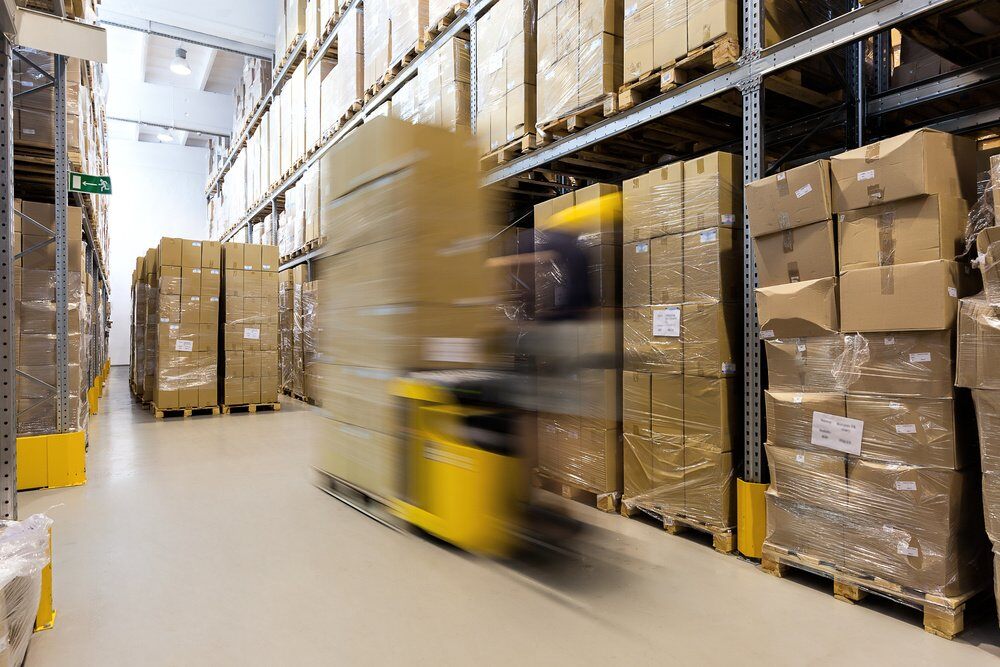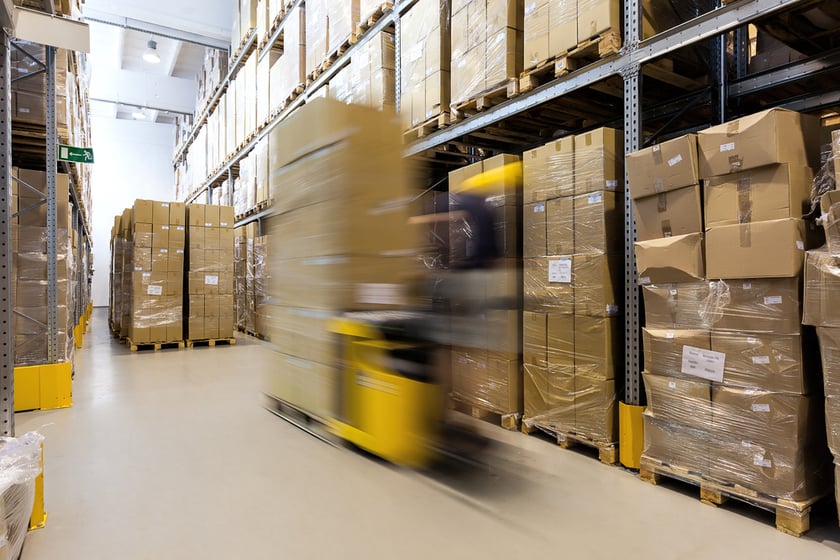Carbon Reduction vs. Compensation: A Guide for Companies
CO2 compensation or CO2 reduction for companies? An overview of the various ways in which companies...
By: Johannes Fiegenbaum on 4/30/24 11:10 AM

Find out how to register on the CBAM website, fulfill your reporting obligations, calculate default values and submit notifications in my guide. I explain everything you need to know about the CBAM regulation to easily comply with the requirements and procedures.
The Carbon Border Adjustment Mechanism (CBAM) Regulation is a European Union initiative that aims to take into account the carbon footprint of imported goods and ensure that companies outside the EU comply with similar environmental standards as companies within the EU. This system is designed to ensure that companies producing and importing in the EU are not disadvantaged, while at the same time creating incentives for companies from outside the EU to reduce their emissions.
The main objective of the CBAM Regulation is to include emissions from imported goods and to ensure that companies outside the EU comply with similar environmental standards as companies within the EU. By introducing a carbon price on imported goods, the CBAM Regulation is intended to help promote global climate protection and protect EU companies from distortions of competition. In a nutshell: European companies should not be penalized by the market for having higher costs due to environmental regulations, such as a carbon price, than companies with lower environmental regulations. This is also known as "carbon leakage".
The CBAM Regulation will have a significant impact on businesses, especially those bringing imported goods into the EU. Companies will need to prepare for new registration, reporting and notification requirements to ensure compliance with the CBAM Regulation. In addition, companies will need to look specifically at the CO2 emissions of their supply chain in order to quantify the CO2 emissions of their imported goods.
The CBAM takes into account the "actual values" of embedded emissions, which means that decarbonization efforts by companies that export to the EU will result in a lower CBAM payment than for companies that do not take action. The price of CBAM allowances to be purchased for the import of CBAM goods will be the same as for EU producers under the EU Emissions Trading Scheme (EU ETS). The actual effective CO2 prices paid outside the EU will be deducted from the adjustment to avoid double pricing.

CBAM goods include goods from the cement, iron and steel, aluminium, hydrogen, fertilizer and electricity sectors. When importing into an EU member state, the importer must compare the CN code of the goods with the list in Annex I of the CBAM Regulation.
There are two types of CBAM goods, namely simple and complex. "Simple goods" are made from input materials that are considered to have zero embedded emissions according to the CBAM reporting methodology. Therefore, the embedded emissions of simple CBAM goods are based solely on the emissions occurring during their production. For "complex goods", it is necessary to include the embedded emissions of the relevant precursor materials, which are themselves within the scope of CBAM, in the manufacturing process. Relevant precursor materials refer to raw materials that are used in the production of complex CBAM goods and are themselves CBAM goods. In the cement sector, a typical example of a precursor material is cement clinker, which is the main component of Portland cement.
However, after the transition phase, which runs until 2026, it is possible that the EU will include other goods in the CBAM report.
Registration on the CBAM website is the first step that companies must take to comply with the requirements of the Regulation: Customs Portal.
Company information such as name, address, VAT number and contact details are required for registration on the CBAM website. Additional documents such as commercial register entries or EORI numbers may also be required.
The quarterly reports must be completed per importer, per CN code and per installation. There are two ways to enter the data in the CBAM Transitional Registry: Reporting entities can manually enter the data directly into the CBAM Transitional Registry user interface. Alternatively, reporting entities can use an XML structure to upload the CBAM quarterly reports. Once an XML file has been successfully uploaded, a new draft of the quarterly report will be created and can be submitted via the CBAM Transitional Registry user interface. A supporting XLS file that can be used to enter the quarterly report using XML has been published on the Commission's CBAM website.
In the CBAM Transitional Registry, there are mandatory and optional fields marked with an asterisk *. These are also displayed in this sample XLS file.

Article 16 of the CBAM Implementing Regulation provides for the following sanctions:
Companies affected by the CBAM Regulation have to fulfill certain reporting obligations.
The CBAM Regulation will become fully effective on January 1, 2026. From this date, goods affected by CBAM will only have to be released for free circulation by so-called "authorized CBAM declarants". For this purpose, a "CBAM account number" must be indicated in the customs declaration. The EU Commission plans to create a corresponding document coding for this purpose, which must be stated in the customs declaration for release for free circulation.
During the transitional phase, as a declarant subject to reporting obligations, you must send a CBAM report to the European Commission no later than one month after the end of each quarter of a calendar year. According to Article 9(1) of the CBAM Implementing Regulation, amendments to an already submitted CBAM report can in principle be made until two months after the end of the respective reporting quarter, which means that amendments are possible until one month after the submission deadline for the CBAM reports.
Companies must calculate the CO2 emissions of their imported goods and report this data in accordance with the requirements of the CBAM Regulation. This requires accurate recording and analysis of emissions data along the supply chain.

Emissions data is calculated using specific emission factors. The concept of embedded emissions in CBAM is narrower than the scope of life cycle assessments (LCA) and product carbon footprints (PCF). The use of emission factors from LCA databases therefore significantly overestimates embedded emissions. Emission factors from LCAs would thus contradict the objective of the CBAM, which aims to reflect the emissions covered by the EU ETS. In the final phase, importers would otherwise be obliged to surrender too many CBAM allowances if they use these emission factors.
During the transition phase, importers must report both direct and indirect emissions for all goods covered by the CBAM. From 1 January 2026, the scope of the CBAM will be limited to direct emissions for iron/steel, aluminium and hydrogen, while importers of cement and fertilizers will have to report both direct and indirect emissions.
Default values can also be used on a transitional basis until 30.06.2024.
The Commission will carry out an initial review of CBAM reports and provide the competent national authority with a list of incomplete or suspect reports (i.e. if the Commission has reason to believe that they do not comply with the CBAM Regulation). It is then the responsibility of the national competent authority to decide whether it wishes to initiate a review and a possible correction procedure, which may ultimately lead to sanctions.

The calculation of default values is an important aspect of the CBAM Regulation as it serves to quantify the CO2 emissions of imported goods.
The quarterly CBAM report must contain the following information in particular:
Benchmarks serve as reference values for the CO2 emissions of certain categories of goods. They enable companies to quantify their emissions and ensure compliance with the Regulation. Until June 30, 2024 (i.e. CBAM reports are due by July 31, 2024), the reporting declarant may use alternative methods to determine emissions for each import of goods for which not all information is available, including the default values provided and published by the Commission: Greenhouse gas emission intensities of the steel, fertilizers, aluminium and cement industries in the EU and its main trading partners.
The CBAM Transitional Register is a secure EU database where reporting companies submit emissions data during the transition period. It runs independently from the EU Customs Trader Portal.
Indicate which methodology you used (e.g. default, mass balance, or measured data) and link to the source of your emission factors (e.g. public database or technical documentation).
No. Market-based certificates like Guarantees of Origin cannot be used to justify actual emission factors. Only direct PPAs or physical connections allow deviation from the default values.
You are still responsible. If you don’t receive actual data in time, you must use the EU default values. Incomplete reports may lead to penalties.
No. Only goods released for free circulation in the EU are subject to CBAM. Goods in transit or temporarily imported (e.g. for testing) are excluded.
Possibly. By the end of 2025, the EU will review the CBAM and consider extending it to other goods and sectors based on emissions leakage risk and data collected.
Yes, if you provide proof of a carbon price actually paid in the third country. Rebates or subsidies will reduce the deductible amount. The EU will clarify details before 2026.
CBAM complements the EU ETS by applying a carbon price to imports as free allowances under ETS are phased out. CBAM ensures fair treatment between EU and non-EU producers.
No. While CBAM uses allowances, there is no cap. However, CBAM prices align with EU ETS prices, and importers must buy allowances for non-exempted emissions from 2026 onward.

A solo consultant supporting companies to shape the future and achieve long-term growth.
More about meCO2 compensation or CO2 reduction for companies? An overview of the various ways in which companies...
This guide is essential for business leaders looking to navigate carbon trading in Europe. From...
This guide provides sustainability managers with an in-depth roadmap for setting near- and...